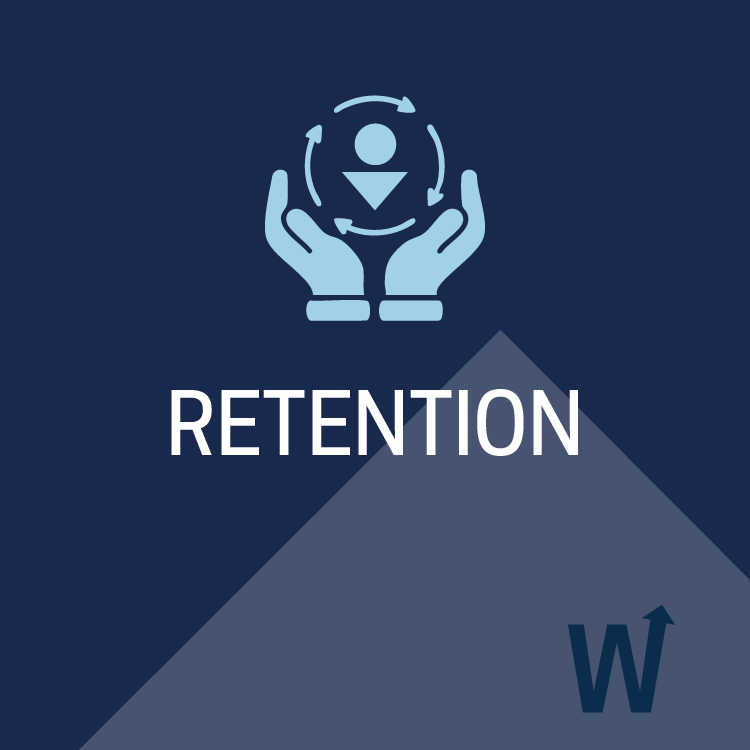 Image 1 of 1
Image 1 of 1


Foundations of Retention Strategies
RETENTION STARTS ON DAY 1. And continues every day after. Simply put, it’s hard to help jobseekers who don’t show up or participate regularly.
The path to good employment starts with active engagement throughout all phases of the workforce development program and continues after job acquisition. Programs can’t control every factor that causes participants to disconnect, but the right approaches boost completion rates.
Successful program retention is built on a mix of strategies that can vary depending on the specific context and population of the program. Here are a few:
MARKETING & MESSAGING that clearly and repeatedly explains the benefits of participation and demonstrates the program’s track record of success encourage commitment.
ACCESSIBILITY & PERSONALIZED SERVICES to meet the unique needs of each participant, regardless of their physical abilities, educational attainment, language proficiency, work history, or other potential barriers to employment.
REGULAR COMMUNICATION, check-ins, updates, and requests for feedback help participants feel connected and involved.
COMMUNITY BUILDING through group activities, peer support groups, or online forums foster a sense of connection among participants.
INCENTIVES & RECOGNITION that reward achievement and positive behavior make participants feel appreciated and increase positive association toward the program.
In this training you will learn how to infuse retention strategies across four distinct stages of the workforce development program lifecycle:
RECRUITMENT, INTAKE, & ORIENTATION: the critical first encounters that set the tone for the program experience.
SKILLS TRAINING & JOB READINESS PREPARATION: the “active” phase of engagement with program services that enhance work-related knowledge and reduce barriers to employment.
THE JOB SEARCH: supporting jobseekers during the often-lengthy process of identifying appropriate job openings, submitting applications, waiting for interview invitations, participating in interviews, and finally receiving a job offer.
FOLLOW-UP AFTER JOB ACQUISITION: helping newly employed participants navigate the first days on a new job, establish routines that balance work and other responsibilities, create the foundation for financial independence, and plan for future career advancement.
KEY COURSE TAKEAWAYS:
Creating an atmosphere of success and inclusion that fosters participation from Day 1.
Effective communication methods to provide clear information on purpose, process and payoff.
Implementing free or low-cost retention rewards and incentives to encourage positive behaviors.
Strengthening interpersonal connections between program and jobseekers to boost attachment throughout the program lifecycle.
REGISTER FOR THIS COURSE
RETENTION STARTS ON DAY 1. And continues every day after. Simply put, it’s hard to help jobseekers who don’t show up or participate regularly.
The path to good employment starts with active engagement throughout all phases of the workforce development program and continues after job acquisition. Programs can’t control every factor that causes participants to disconnect, but the right approaches boost completion rates.
Successful program retention is built on a mix of strategies that can vary depending on the specific context and population of the program. Here are a few:
MARKETING & MESSAGING that clearly and repeatedly explains the benefits of participation and demonstrates the program’s track record of success encourage commitment.
ACCESSIBILITY & PERSONALIZED SERVICES to meet the unique needs of each participant, regardless of their physical abilities, educational attainment, language proficiency, work history, or other potential barriers to employment.
REGULAR COMMUNICATION, check-ins, updates, and requests for feedback help participants feel connected and involved.
COMMUNITY BUILDING through group activities, peer support groups, or online forums foster a sense of connection among participants.
INCENTIVES & RECOGNITION that reward achievement and positive behavior make participants feel appreciated and increase positive association toward the program.
In this training you will learn how to infuse retention strategies across four distinct stages of the workforce development program lifecycle:
RECRUITMENT, INTAKE, & ORIENTATION: the critical first encounters that set the tone for the program experience.
SKILLS TRAINING & JOB READINESS PREPARATION: the “active” phase of engagement with program services that enhance work-related knowledge and reduce barriers to employment.
THE JOB SEARCH: supporting jobseekers during the often-lengthy process of identifying appropriate job openings, submitting applications, waiting for interview invitations, participating in interviews, and finally receiving a job offer.
FOLLOW-UP AFTER JOB ACQUISITION: helping newly employed participants navigate the first days on a new job, establish routines that balance work and other responsibilities, create the foundation for financial independence, and plan for future career advancement.
KEY COURSE TAKEAWAYS:
Creating an atmosphere of success and inclusion that fosters participation from Day 1.
Effective communication methods to provide clear information on purpose, process and payoff.
Implementing free or low-cost retention rewards and incentives to encourage positive behaviors.
Strengthening interpersonal connections between program and jobseekers to boost attachment throughout the program lifecycle.
